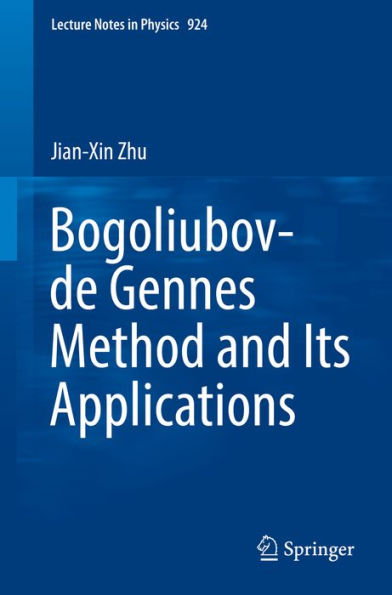The purpose of this book is to provide an elementary yet systematic description of the Bogoliubov-de Gennes (BdG) equations, their unique symmetry properties and their relation to Green’s function theory. Specifically, it introduces readers to the supercell technique for the solutions of the BdG equations, as well as other related techniques for more rapidly solving the equations in practical applications.
The BdG equations are derived from a microscopic model Hamiltonian with an effective pairing interaction and fully capture the local electronic structure through self-consistent solutions via exact diagonalization. This approach has been successfully generalized to study many aspects of conventional and unconventional superconductors with inhomogeneities – including defects, disorder or the presence of a magnetic field – and becomes an even more attractive choice when the first-principles information of a typical superconductor is incorporated via the construction of a low-energy tight-binding model. Further, the lattice BdG approach is essential when theoretical results for local electronic states around such defects are compared with the scanning tunneling microscopy measurements.Altogether, these lectures provide a timely primer for graduate students and non-specialist researchers, while also offering a useful reference guide for experts in the field.
The purpose of this book is to provide an elementary yet systematic description of the Bogoliubov-de Gennes (BdG) equations, their unique symmetry properties and their relation to Green’s function theory. Specifically, it introduces readers to the supercell technique for the solutions of the BdG equations, as well as other related techniques for more rapidly solving the equations in practical applications.
The BdG equations are derived from a microscopic model Hamiltonian with an effective pairing interaction and fully capture the local electronic structure through self-consistent solutions via exact diagonalization. This approach has been successfully generalized to study many aspects of conventional and unconventional superconductors with inhomogeneities – including defects, disorder or the presence of a magnetic field – and becomes an even more attractive choice when the first-principles information of a typical superconductor is incorporated via the construction of a low-energy tight-binding model. Further, the lattice BdG approach is essential when theoretical results for local electronic states around such defects are compared with the scanning tunneling microscopy measurements.Altogether, these lectures provide a timely primer for graduate students and non-specialist researchers, while also offering a useful reference guide for experts in the field.

Bogoliubov-de Gennes Method and Its Applications

Bogoliubov-de Gennes Method and Its Applications
eBook (1st ed. 2016)
Related collections and offers

Product Details
| ISBN-13: | 9783319313146 |
|---|---|
| Publisher: | Springer-Verlag New York, LLC |
| Publication date: | 06/21/2016 |
| Series: | Lecture Notes in Physics , #924 |
| Sold by: | Barnes & Noble |
| Format: | eBook |
| File size: | 4 MB |
